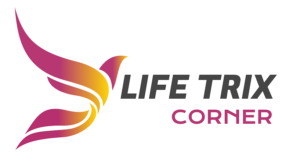Glass provides relief from opaque, obstinate materials obstructing vision, so people often choose it as a construction material.
It protects from the elements, glass also connects the building to its environment. However, what about the issue of privacy? Can Simple Glass satisfy that need? Not at all! Quite the opposite!
Glass solutions such as frosted and tinted glass offer permanent privacy in the form of permanent privacy but are also available for on-demand privacy as smart glass. Let’s discover the many ways that smart glass is changing architecture.
What is Smart Glass Technology?
Smart glasses allow users to customize the appearance of the glass with a few flicks of the switch. Electric current adjusts the appearance of this electric glass according to the user’s needs.
Smart Glass offers a superior alternative to blinds and shades installed behind partitions or small windows in addition to being easier to maintain.
Glass surfaces with smart glass technology are valuable in homes, hospitals, educational facilities, and recreational areas. A window, door, divider, retail window, etc., can be easily incorporated with this technology.
How is Smart Glass Technology Changing Architecture?

Technology with so much promise will inevitably influence modern architecture’s aesthetics, functionality, and privacy. Check out how intelligent glass changes architecture design!
#1 Doors & Walls
Modern interior designers and architects can use switchable glass and glazing to create a variety of contemporary and stylish design ideas. High-end interior design projects benefit from the luxurious element of intelligent glass walls.
With switchable glass walls, you can convert any glass from frosted to clear, and smart panels in all spaces can replace walls.
A smart glass partition provides privacy and works excellently as a projection screen during meetings. In addition, smart glass in an office environment enhances the style and modernity of the space
A growing number of hotels are using smart glass for interior walls and room dividers. Adding smart glass to the interior design of hotel rooms will make them appear and feel bigger without compromising the privacy and comfort of your hotel guests.
With smart glass, practitioners can adjust opacity levels to their preferences regarding privacy. They’re also used to monitor patients easier and can be used as doors and walls. The technology is also being incorporated into examination rooms, ICUs, X-ray rooms, and emergency rooms.
#2 Building Entrances
Switchable smart glass can create a sleek-looking entrance for a building that leaves a positive first impression and differentiates it from other facilities. You can also customize Smart glass to create a more bespoke design solution for building entrances.
Building managers and event organizers can also use switchable glass technology to display custom branding at the office entrance. High opacity options make the panels ideal for projecting images at a doorway.
The entrance of a commercial building, such as a hotel, should be stylish to leave a good impression on visitors and occupants. It is possible to tailor privacy levels for special events and other functions or even for guests staying in a hotel, such as high-profile celebrities.
Patients will be able to stay more comfortably in a building with an enhanced architectural design. Hospital design focuses more on the functionality of the building than its design elements and aesthetics.
#3 Conference Rooms
It is common for conference rooms to be situated in the most beautiful areas of an office floor, even though they are not used often. Having a private meeting room or boardroom is sometimes necessary, but it does not mean it should be isolated from the rest of an office.
A variety of design innovations can help you impress your clients with your boardroom design and host confidential meetings using natural light and views. If you block out natural light, your office will look smaller and less bright.
#4 Open Spaces
You can install custom skylights in your residential or commercial space to give it a contemporary feel. Consider intelligent glass technology for superior daylighting, unobstructed views outside, and privacy. No overheating or solar glare is necessary indoors to enjoy the skyline.
Smart glass skylights can act as focal points of open-plan spaces – blending seamlessly into the roof. If you want to cover a view, switch to opaque mode. Or, if you’re going to enjoy a view, you can switch to transparent mode.
What Changes in Technology Are Projected in Architecture?
The architectural industry is driven by technological innovations that make a significant impact. With the recent advancements in 3D printing, 4D printing, augmented reality, and artificial intelligence, architecture is being reinvented.
Wind Up
Smart glass technology is used in offices, hotels, hospitals, and residential buildings to control the light, glare, UV radiation and maintain privacy. By using switchable glass technology, architecture can make commercial buildings more stylish and functional.















